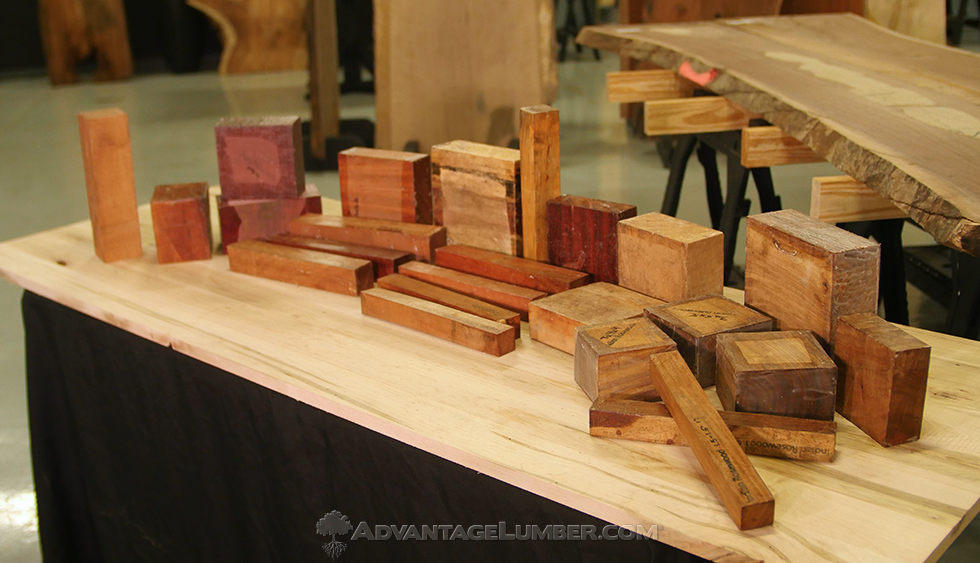Walnut Turning Blanks

Black Walnut Turning Blanks
Buy Online
All Turning Blanks
Shop NowWalnut Specs
- Scientific Name
- Juglans nigra
- Common Name(s)
- Black Walnut
- Distribution
- Eastern United States
- Specific Gravity
- Basic: .51, 12% MC: .61
- Janka Hardness
- 1,010 lbf (4,490 N)
- Modulus of Rupture
- 14,600 lbf/in2 (100.7 MPa)
- Elastic Modulus
- 1,680,000 lbf/in2 (11.59 GPa)
- Crushing Strength
- 7,580 lbf/in2 (52.3 MPa)
- Shrinkage
- Radial: 5.5%, Tangential: 7.8%, Volumetric: 12.8%, T/R Ratio: 1.4
- Appearance
- Heartwood can range from a lighter pale brown to a dark chocolate brown with darker brown streaks. Color can sometimes have a grey, purple, or reddish cast. Sapwood is pale yellow-gray to nearly white. Figured grain patterns such as curl, crotch, and burl are also seen.
- Texture
- Grain is usually straight, but can be irregular. Has a medium texture and moderate natural luster. Endgrain: Semi-ring-porous; large earlywood pores grading to medium latewood pores, few; solitary and radial multiples of 2-3; tyloses occasionally to abundantly present; growth rings distinct; medium rays barely visible without lens, normal spacing; parenchyma diffuse-in-aggregates (sometimes very faint and barely visible even with lens) and banded (marginal).
- Rot Resistance
- Black Walnut is rated as very durable in terms of decay resistance, though it is susceptible to insect attack.
- Workability
- Typically easy to work provided the grain is straight and regular. Planer tearout can sometimes be a problem when surfacing pieces with irregular or figured grain. Glues, stains, and finishes well, (though walnut is rarely stained). Responds well to steam bending.
- Odor
- Black Walnut has a faint, mild odor when being worked.
- Allergies/Toxicity
- Although severe reactions are quite uncommon, Black Walnut has been reported as a sensitizer. Usually most common reactions simply include eye and skin irritation.
- Pricing/Availability
- Very popular and widely available, though board widths can sometimes be narrow. Considered a premium domestic hardwood, prices are in the high range for a domestic species.
- Sustainability
- This wood species is not listed in the CITES Appendices or on the IUCN Red List of Threatened Species.
- Common Uses
- Furniture, cabinetry, gunstocks, interior paneling, veneer, turned items, and other small wooden objects and novelties.
- Comments
- It would be hard to overstate Black Walnut’s popularity among woodworkers in the United States. Its cooperative working characteristics, coupled with its rich brown coloration puts the wood in a class by itself among temperate-zone hardwoods. To cap it off, the wood also has good dimensional stability, shock resistance, and strength properties.
Black Walnut Turning Blank Prices
2″ x 2″ x 12″ Black Walnut Turning Blank
$5.95
Buy Online
3″ x 3″ x 12″ Walnut Turning Blank
$15.50
Buy Online
3″ x 6″ x 6″ Walnut Turning Blank
$15.50
Buy Online
3″ x 8″ x 8″ Walnut Turning Blank
$26.30
Buy Online
